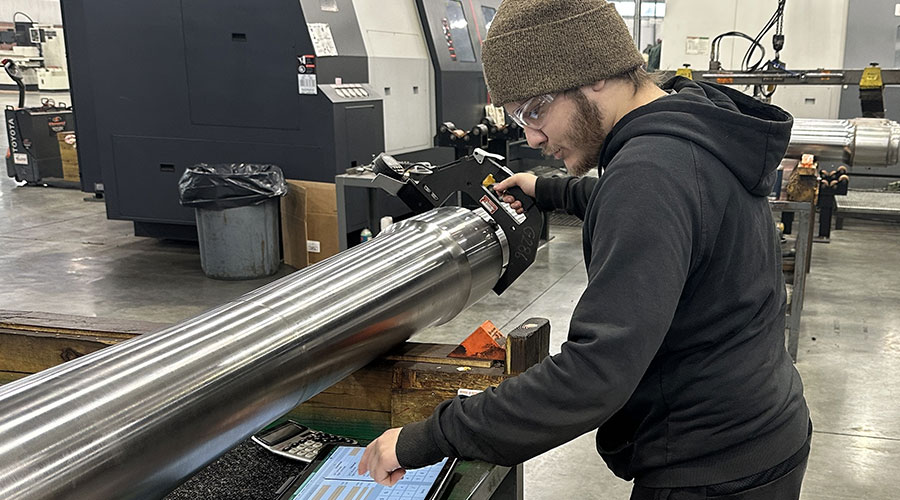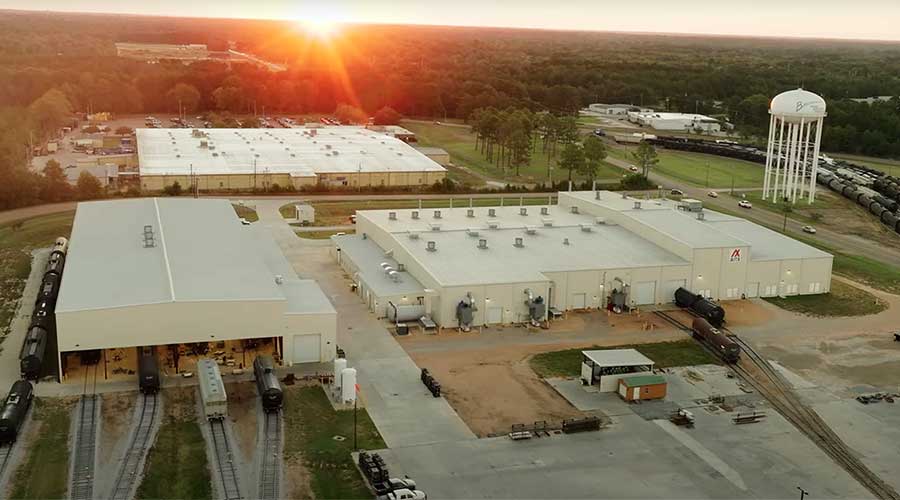Stay updated on news, articles and information for the rail industry
August 2007
Rail News: Mechanical
Seeking qualified applicants
By Jeff Stagl, managing editor
For decades, coatings and decals have been applied to freight cars. In recent years, they’ve had a common bond of a different sort: New regulations are having an effect on how — and how often — they’re applied.
Federal and state regulations continue to mandate the levels of pollutants that can be emitted when coatings are applied in a shop, while a Federal Railroad Administration (FRA) reflectorization rule requires railroads and fleet owners to equip 20 percent of their cars with retroreflective sheeting by Nov. 28, 2007. The reflectorization rule also requires sheeting on an additional 10 percent of fleets each year until all existing cars comply by Nov. 28, 2015. All new cars must feature the decals, as well.
To comply with emission regulations — many of which differ at the state level — coating suppliers are installing equipment to control air pollutants in car shops.
“State regulations are becoming more stringent, with some to take effect in 2007 and some in 2009,” says Jad Nasser, marketing manager for the Americas for Hempel USA, which supplies rail-car coatings. “For us, it means a combination of installing equipment and measuring the level of emissions to ensure each shop complies with the levels specified.”
Supply and demand
To help railroads and car owners meet FRA rule mandates, decal and reflective marking suppliers are working to fill orders well ahead of this year’s post-Thanksgiving deadline.
“Since the ruling became final [in late 2005], we have offered special programs to our customers to help them with the accelerated needs,” says Barry Sullivan, marketing operations manager for 3M Traffic Safety Systems, which supplies reflective markings to the transportation industry.
Railroads and car owners also are seeking more coatings that can be applied in one coat to get cars through shops faster, and decals that offer better adhesion to increase longevity and improved visibility to boost safety at grade crossings.
In February, Hempel USA introduced Epoxy 374US, an ultra high-solids and high-gloss coating that can be applied in a single coat. One coat doesn’t last as long as two, but still offers “reasonable protection,” says Nasser.
“An extra coat takes six to 12 more hours, or perhaps another day in a shop,” he says. “It becomes a compromise: Do you want cars to get through a shop quicker or more years of service?”
Hempel also plans to introduce two single-application coatings this month and in the fourth quarter.
In addition, the company expects to launch a two-coat product by year’s end that will replace an existing coating, says Nasser.
A few years ago, Hempel stopped adapting general protective coatings for rail applications.
“We placed more emphasis on developing products for the rail industry to cater to specific needs,” says Nasser.
Lining up sales
Salco Products Inc., which distributes a car lining and Reflexite decals, also provides rail-specific options.
The company distributes a rubber car lining designed for cars carrying hydrochloric acid, which can “eat away” other linings, says Salco Products Manager of Sales and Marketing Scott Swanson.
For the past few years, the company has used a Salco Products-developed stripper to remove old rubber linings.
“We used to burn off old linings, but the stripper is faster,” says Swanson.
In the decal arena, Salco Products’ reflective marking business has been fairly steady since the FRA rule was issued.
At International Decal Management Corp. (IDMC), which also distributes Reflexite’s decals, sales have been picking up.
“At first, most were gung-ho about the rule and got cars done as they came into shops,” says IDMC President Tracy DeLeon. “But those that procrastinated are trying to get it done now.”
Produced from single-ply materials, Reflexite’s decals are thinner and more flexible than other reflective markings, and resist peeling, she says.
“They’re also prismatic, so they’re very reflective,” says DeLeon.
All of 3M Traffic Safety Systems’ rail markings incorporate high-performance prismatic reflective sheeting, says 3M’s Sullivan.
A few years ago, the company modified its adhesive so markings can be applied in cold weather down to 40 F.
“Because of the wide variety of rail cars and conditions, it is important that the product offered exceed what is
required for adhesion,” says Sullivan.
Last year, 3M also reintroduced fluorescent yellow markings after the FRA amended specifications to allow railroads and car owners to use white or yellow decals on their fleets. The yellow markings are highly visible in the daytime, at dawn and dusk, and at night, says Sullivan.
Railroads and fleet owners will need to place decals on about 175,000 to 200,000 cars annually to comply with the FRA rule, then maintain that pace beyond 2015 because cars need to be repainted every 10 years, says Cheryl Harrison, director of railroad sales for Reidler Decal Corp.
The company, which has supplied decals to the rail industry for more than 80 years, expects to sell 10,000 rolls of decals annually because of the reflectorization rule.
However, if tank-car fleets continue to expand to meet burgeoning ethanol demand and auto racks are redesigned to accommodate smaller and more fuel-efficient automobiles, there could be fewer markings required on some car types, says Harrison.
The end result: a minor downturn in decal business. 


 LRW Honors Amtrak’s Acheson As Railway Woman Of The Year
LRW Honors Amtrak’s Acheson As Railway Woman Of The Year
 From Editor-In-Chief Foran: Of Gender Equity And Inclusion
From Editor-In-Chief Foran: Of Gender Equity And Inclusion
 Spotlight On Some Of Today’s Rail Safety Products
Spotlight On Some Of Today’s Rail Safety Products
 Women of Influence in Rail eBook
Women of Influence in Rail eBook
 railPrime
railPrime








